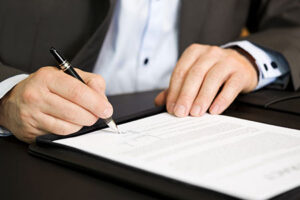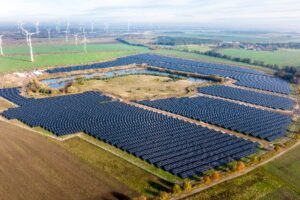How Do Windmills Work?
The image of a rotating windmill has remained deeply embedded in our minds since childhood because we’ve already saw these amazing engineering masterpieces featured in cartoons, movies and even in real life. Let’s see how do windmills work.
What is a Windmill? – Short History
In antiquity, the first windmill was the windwheel of the Greek engineer Heron of Alexandria that is a first mention of a windmill in a document from the first century, and is the first known instance when a wheel driven by the wind, was used to power a machinery (Heron’s wind-powered organ).
Another example comes from the fourth century and mentions a wind-driven wheel (prayer wheel) that was used in Tibet and China.
A much earlier mention of a windmill claims that the Babylonian emperor Hammurabi was planning to use the power of the wind for an irrigation project in the seventeenth century BCE.
The first windmills used in antiquity were horizontal windmills (sails were rotating in the horizontal plane) with vertical axes.
These were called “panemone windmills” and were first invented in Persia and first recorded by the Persian geographer Estakhri in a document from the ninth century.
The windmills were composed of 6 to 12 sails covered in cloth material or reed matting and were used to grind grain for flour or draw up water.
The first horizontal windmills were also used in Asia
Similar horizontal windmills, but with rectangular blades were used for irrigation in China and appear in a document from the thirteenth century.
In Europe, the first horizontal windmills were built in small numbers during the eighteenth and the nineteenth centuries.
The vertical windmill with horizontal axis dates from the last quarter of the twelfth century in the triangle formed by eastern England, northern France and Flanders.
The windmills embedded deeply in our minds since childhood is the vertical windmill with four rectangular blades.
Something like the windmills that appear in the Spanish novel by Miguel de Cervantes Saavedra with the full title “The Ingenious Nobleman Mister Quixote of La Mancha” or short “Don Quixote”.
Vertical windmills have become very popular in Europe in the fourteenth century reaching at peak (200,000) in 1850.
Today, instead of using windmills, we are using wind turbines that are turning the power of the wind into clean electricity.
A windmill is a mill that turns the energy of the wind into a rotational energy using sails or blades.
How Does a Windmill Work?
A windmill is a mill that turns the kinetic energy of the wind into a rotational energy using sails or blades.
Initially windmills were used to grind cereals and turn them into flour or to pump water.
Today, we are using wind turbines (uses only three blades instead of four) to turn the kinetic power of the wind into clean electricity.
A modern windmill (wind turbine) consists of the following parts:
- blades, rotors and the hub
- drive train, gears and mechanical brakes (used for safety measures);
- a generator that turns the kinetic energy of the wind into electricity;
- a yawing mechanism that maintains the turbine in the direction of the wind for maximum power extraction;
- a solid foundation and a tower;
- an electrical system that transfers the energy to the grid or is connected to a battery system to store the energy.
In the modern age, we are no longer using windmills to produce flour or to pump water, we are now using them to generate clean electricity.
How is Wind Energy Produced?
Wind is created by the moving air and is caused by the differences in air pressure between different areas of the atmosphere.
The high pressured air is moving to areas with low pressured air. The greater the difference in air pressure, the stronger the wind.
A wind turbine is a machine that converts the kinetic energy of the wind into clean electricity.
The wind rotates the blades of the turbine, and the mechanical energy of the blades is then turned into clean electricity by the generator.
In the large wind turbines of today, the low speed rotation of the blades is turned into high speed rotation by a gear mechanism located inside the nacelle, and the generator transforms mechanical energy into electricity.
Because the speed of the wind fluctuates from one day to another and sometimes even in the same day, the output of the turbine does not represent a constant source of electricity.
Turbines are connected to conventional generators in the grid to reduce the load of these generators when they are producing energy for the grid.
A different setup uses storage devices (battery systems) to store the energy produced by the turbine and to discharge the electricity uniformly into the grid.
The Modern Use of Wind Turbines
Today, we are using wind turbines (modern windmills) in areas with good winds to generate clean electricity and lower the carbon footprint.
However, there are some concerns related to the fact that the rotating blades of the wind turbines are killing birds and bats.
Another concern is related to the noise produced by the rotating blades, maybe that is the reason why the large wind turbines are located in remote areas or on the sea (offshore).
Using wind turbines to generate clean electricity reduces the consumption of fossil fuels and lowers the level of harmful emissions, which reduces the impact on the climate.

Large offshore wind turbines in U.S. waters.
What Are the Benefits of Wind Turbines?
Wind is an intermittent source of energy, but even so, it represents a great and free source of clean energy here on the planet.
Wind turbines are not producing harmful emissions, so they are not releasing greenhouse gases when working.
Small wind turbines along with solar panels could help us become energy independent.
Wind Turbines to Become an Important Source of Clean Power in the Future
Wind has a great potential to generate huge amounts of clean energy, so we only need to increase the number of wind turbines if we want to decrease the amount of fossil fuels burned for energy generation.
Final thoughts
As we move towards a cleaner future, the share of the clean power sources in the energy mix of all the countries will significantly improve, and the number of onshore and offshore wind turbines is expected to grow exponentially.






